RARE FRANKFORT Germany Missions WWII 100th Bomb Group B-17 Navigator Bomb Raid Map

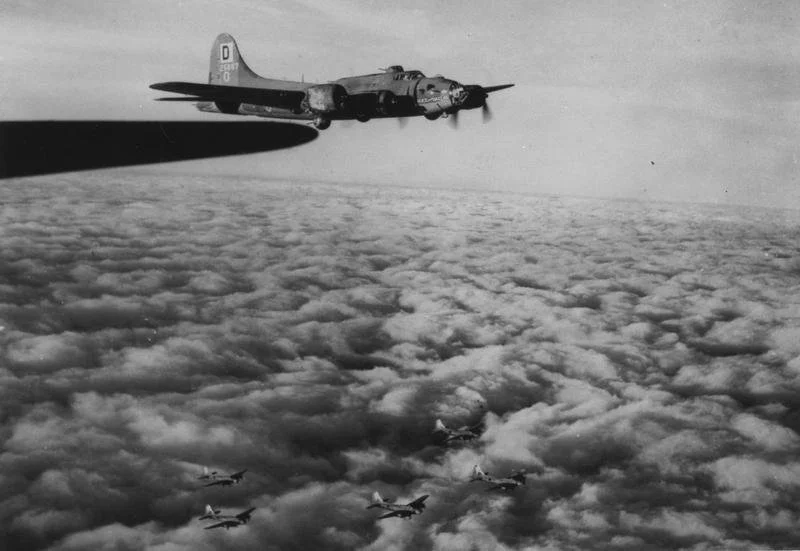

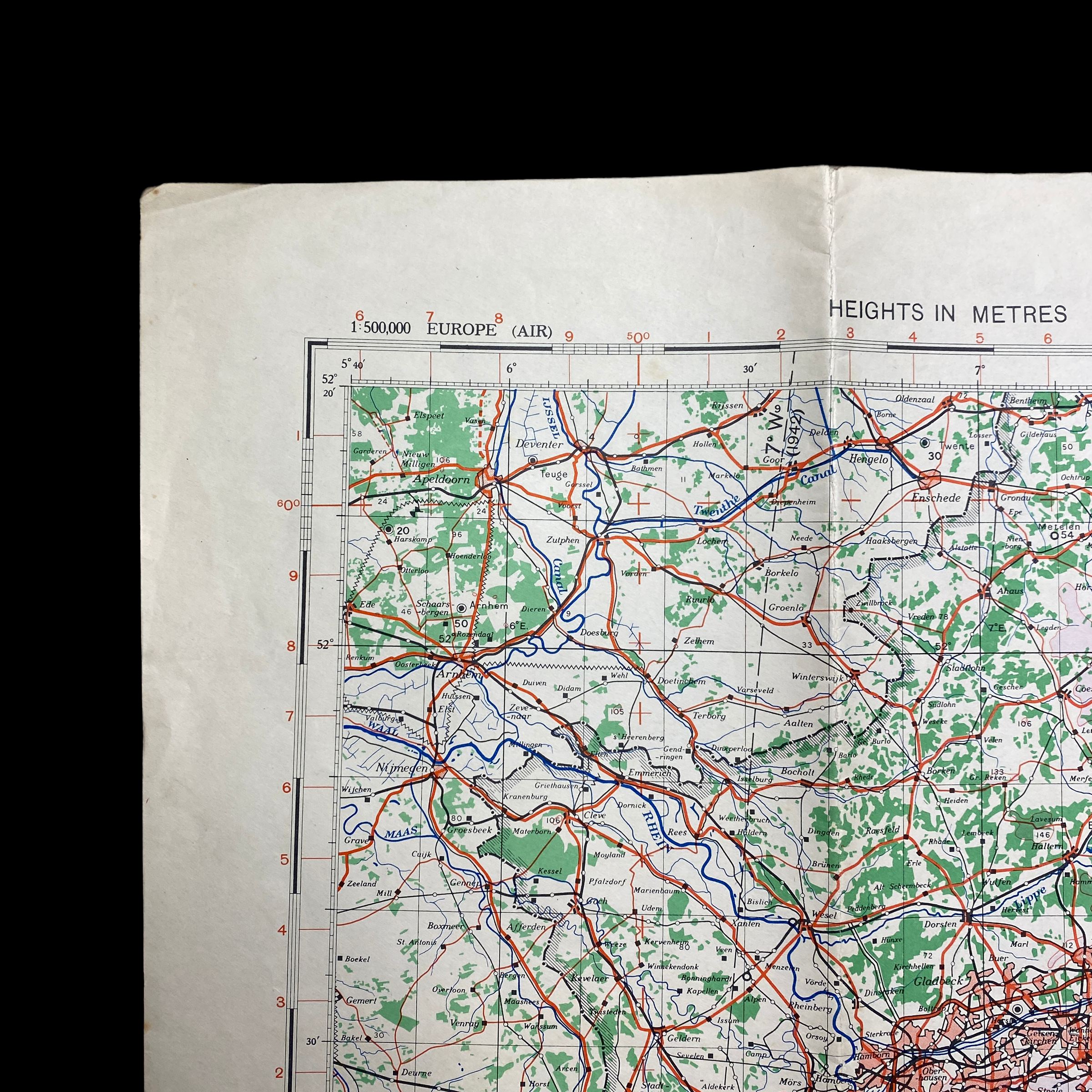
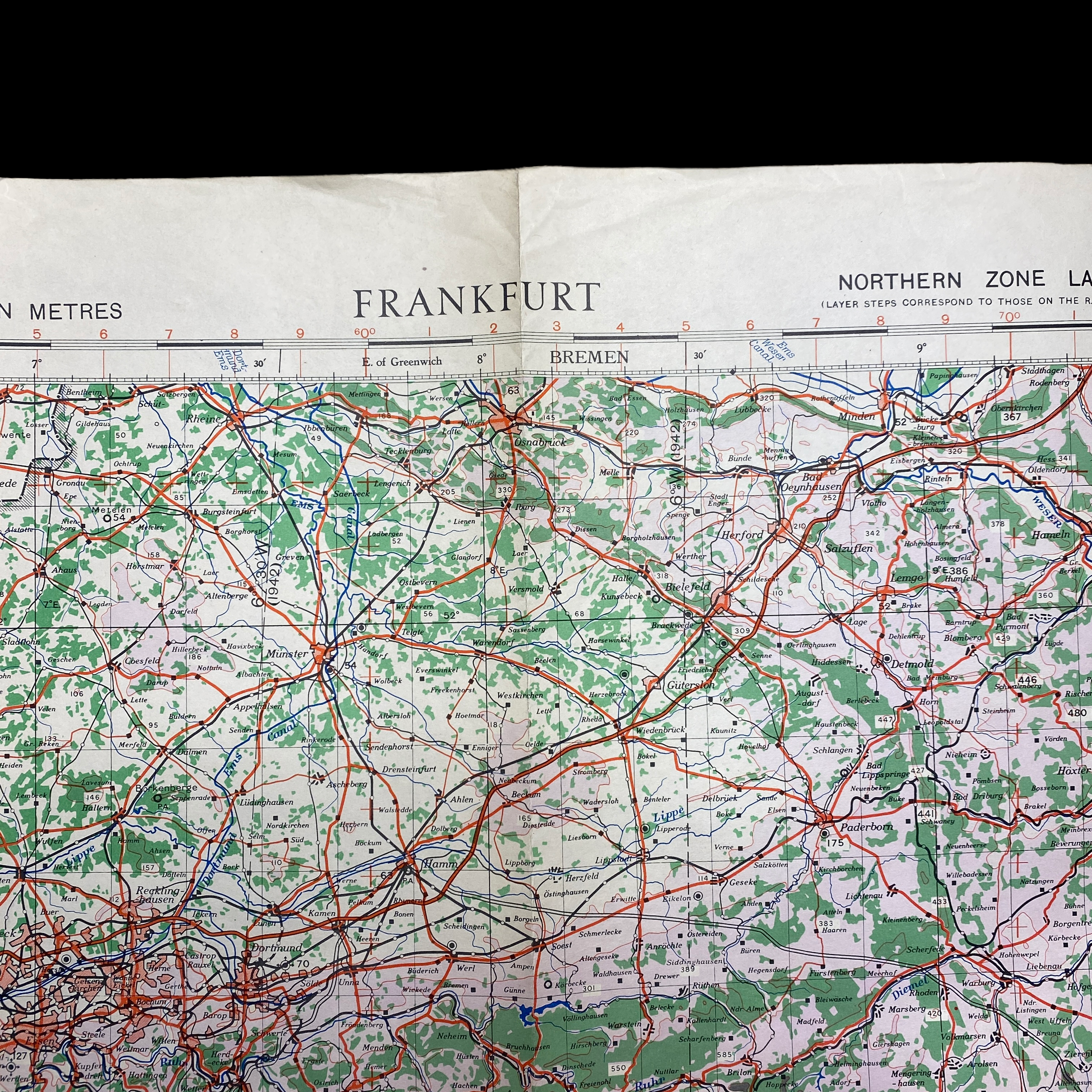

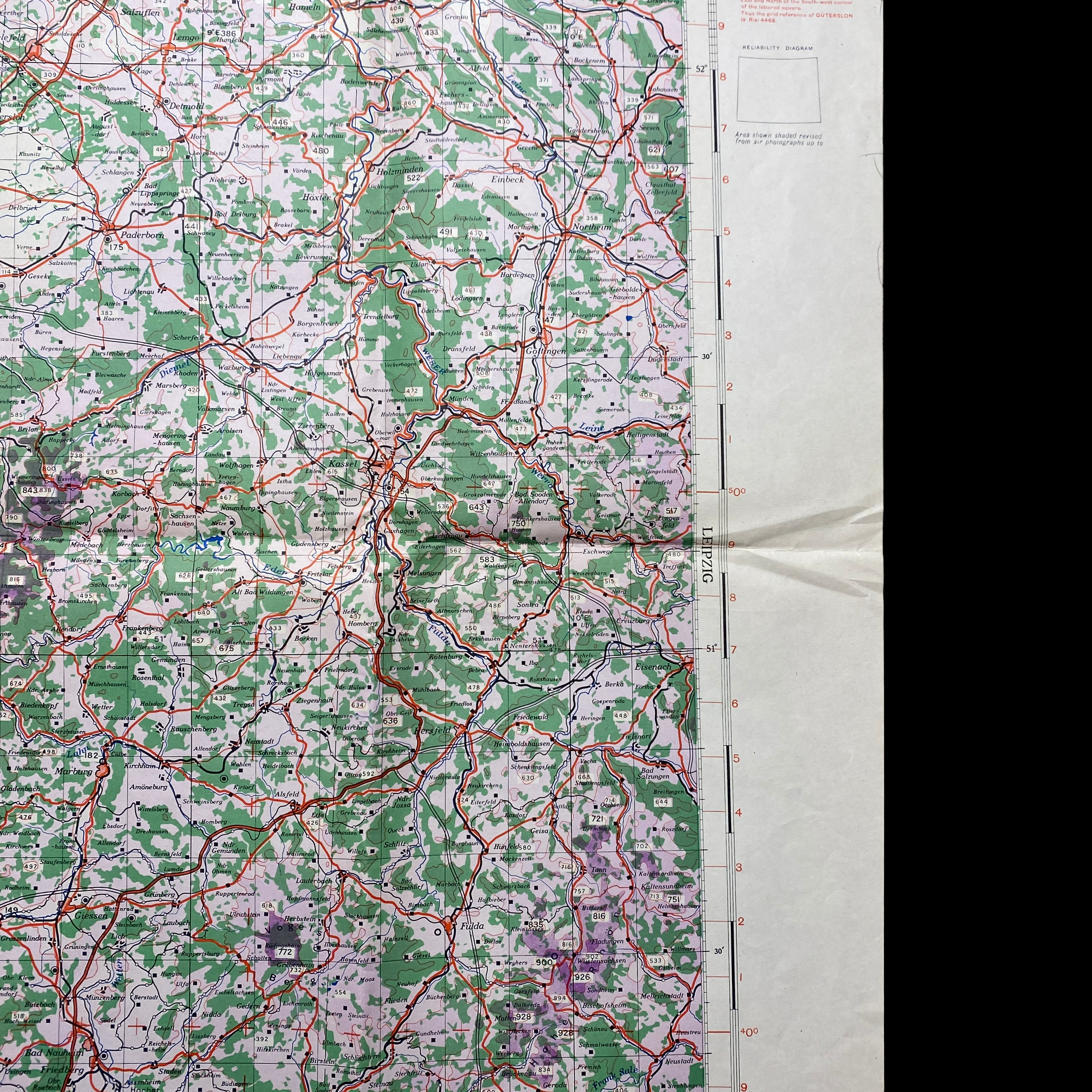
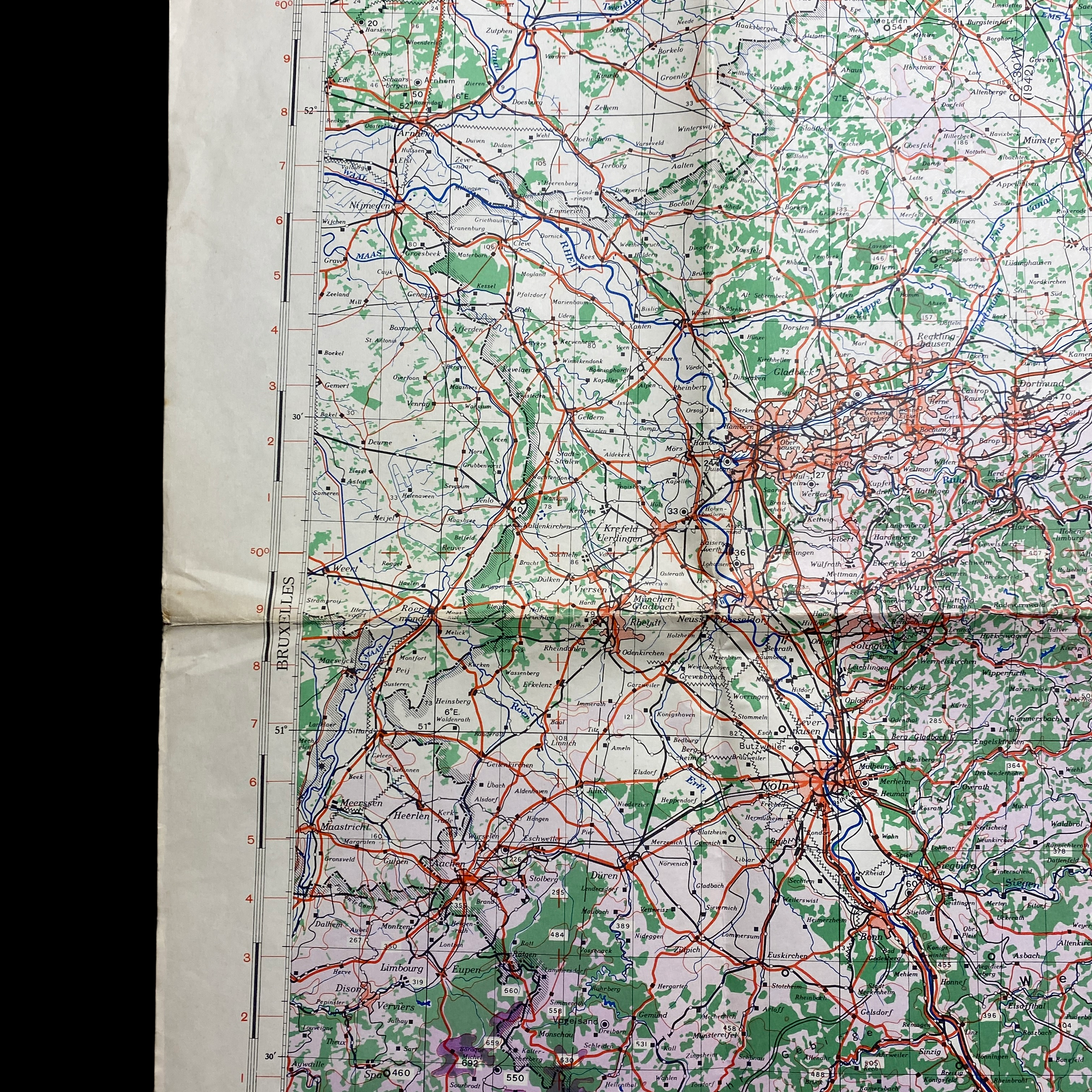






RARE FRANKFORT Germany Missions WWII 100th Bomb Group B-17 Navigator Bomb Raid Map
Comes with C.O.A.
RARE MUSEUM-GRADE BOMBING RAID MISSION MAP FROM “BLOODY HUNDREDTH” 8TH AIR FORCE WWII NAVIGATOR VETERAN.
*This map of the “FRANKFORT” region in Germany was used on 100th Bomb Group bombing raid missions. Over the course of WWII, the 100th Bomb Group (The Bloody Hundredth) participated in many bombing raids in their area specifically tareting the Frankfurt. The 100th Bomb Group heavily targeted the city of Frankfurt over the course of WWII with 7 total missions over the region. The Frankfort missions specifically targeted German the main city, steel works, and AC factories. During the Frankfurt missions the 100th Bomb Group lost 38 crew and 4 aircraft.
Below are the mission numbers of the 100th Bomb Group to Stettin and Frankfort:
Mission: 63, 64, 72, 67, 239, 244, 260, 275
*What makes this map very rare and unique is the target mark over Kolin (Cologne). Over the course of WWII, the 100th Bomb Group (The Bloody Hundredth) participated in 4 bombing missions targeting KOLIN (COLOGNE) aimed to target the city itself as well as COLOGNE’s auto and railway bridges.
During these raids solely directed at KOLIN (COLOGNE), the 100th Bomb Group alone lost 9 crew and 1 aircraft lost.
Below are the mission numbers of the 100th Bomb Group to Cologne:
Mission: 212, 213, 246, 247
This is the third map of FRANKFORT found in this collection. It was not uncommon for the B-17 navigators to be given new and updated (revised) maps for new missions to the same areas. The 100th Bomb Group served in the European Theater from 1943-1945 (22 months of aerial combat) as well as participated in MANY raid missions to FRANKFORT and the surrounding regions so it is only natural for there to be multiple maps for the multiple missions.
This incredible original WWII Europe Air mission map was by both navigators and pilots on the bombing raids and missions of the 100th Bomb Group (8th Air Force) while serving in the European Theater. This mission map was a bring back of a WWII navigator veteran who served extensively with the 100th Bomb Group (8th Air Force) during WWII. This 8th Air Force veteran brought back ALL of his bombing raid mission maps during his time serving from 1942 till VE-Day in 1945. This veterans collection has been requested to be pieced out to spread the legacy of the airmen of the 8th Air Force that sacrificed their lives for our freedom. A portion of this sale is also being donated to the non-profit Honor Flight Network. The mission of Honor Flight is to transport America’s veterans to Washington, D.C. to visit the memorials dedicated to honoring those who have served and sacrificed for our country.
The 100th Bomb Group was constituted as a heavy bomber group inside the Eighth Air Force, which, at peak strength on D-Day, June 6, 1944, fielded 40 groups of Boeing B-17s and Consolidated B-24s. The 351st Bomb Group flew strategic bombing missions from their base at Polebrook, Northamptonshire from April 1943 to June 1945.
The 100th Bomb Group also known as the "The Bloody Hundredth", because of its reputation for losing a high number of aircraft and crews.
Over the course of 22 months of aerial combat, the aircrews of the 100th had served a deadly apprenticeship as they honed their skills and tactics. In an unemotional analysis of the raw numbers, the Bloody 100th’s wartime losses were not the worst suffered by the Eighth Air Force, though they were in the top three of losses by heavy bomber groups. The official history from the 100th Bomb Group Foundation cites 184 missing aircrew reports on 306 missions. In his memoir An Eighth Air Force Combat Diary, 100th copilot John Clark pointed out that “50% of the Group’s losses occurred in only 3% of its missions.” Like a gambler whose luck has gone cold, when the crews of the 100th had a bad day, they had a very bad day.
More than 26,000 Eighth Air Force personnel sacrificed their lives in service to the war effort. The total number killed or missing in action was slightly more than that suffered by the U.S. Marine Corps, and a little less than half the losses sustained by the entire U.S. Navy. Comparisons such as these do nothing to diminish the contributions of other military branches, but rather point out the gargantuan scale of the Eighth Air Force’s effort. The 100th Bomb Group’s portion of those losses was 785 men killed outright or missing in action and 229 aircraft destroyed or rendered unsuitable for flight.
*Full Mission History of the 100th Bombardment Group (Heavy) during WWII:
Constituted as 100th Bombardment Group (Heavy) on 28 Jan 1942. Activated on 1 Jun 1942. Used B-17’s to prepare for duty overseas. Moved to England, May-Jun 1943, and was assigned to Eighth AF. Operated chiefly as a strategic bombardment organization until the war ended. From Jun 1943 to Jan 1944, concentrated its efforts against airfields in France and naval facilities and industries in France and Germany. Received a DUC for seriously disrupting German fighter plane production with an attack on an aircraft factory at Regensburg on 17 Aug 1943. Bombed airfields, industries, marshaling yards, and missile sites in Western Europe, Jan-May 1944. Operations in this period included participation in the Allied campaign against enemy aircraft factories during Big Week, 20-25 Feb 1944. Completed a series of attacks against Berlin in Mar 1944 and received a DUC for the missions. Beginning in the summer of 1944, oil installations became major targets. In addition to strategic operations, the group engaged in support and interdictory missions, hitting bridges and gun positions in support of the Normandy invasion in Jun 1944; bombing enemy positions at St Lo in Jul and at Brest in Aug and Sep; striking transportation and ground defenses in the drive against the Siegfried Line, Oct-Dec 1944; attacking marshaling yards, defended villages, and communications in the Ardennes sector during the Battle of the Bulge, Dec 1944- Jan 1945; and covering the airborne assault across the Rhine in Mar 1945. Received the French Croix de Guerre with Palm for attacking heavily defended installations in Germany and for dropping supplies to French Forces of the Interior, Jun-Dec 1944. Returned to the US in Dec 1945. inactivated on 21 Dec 1945.